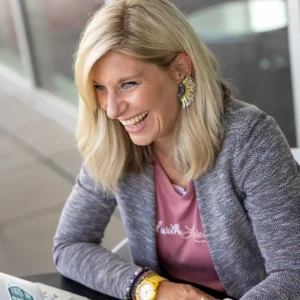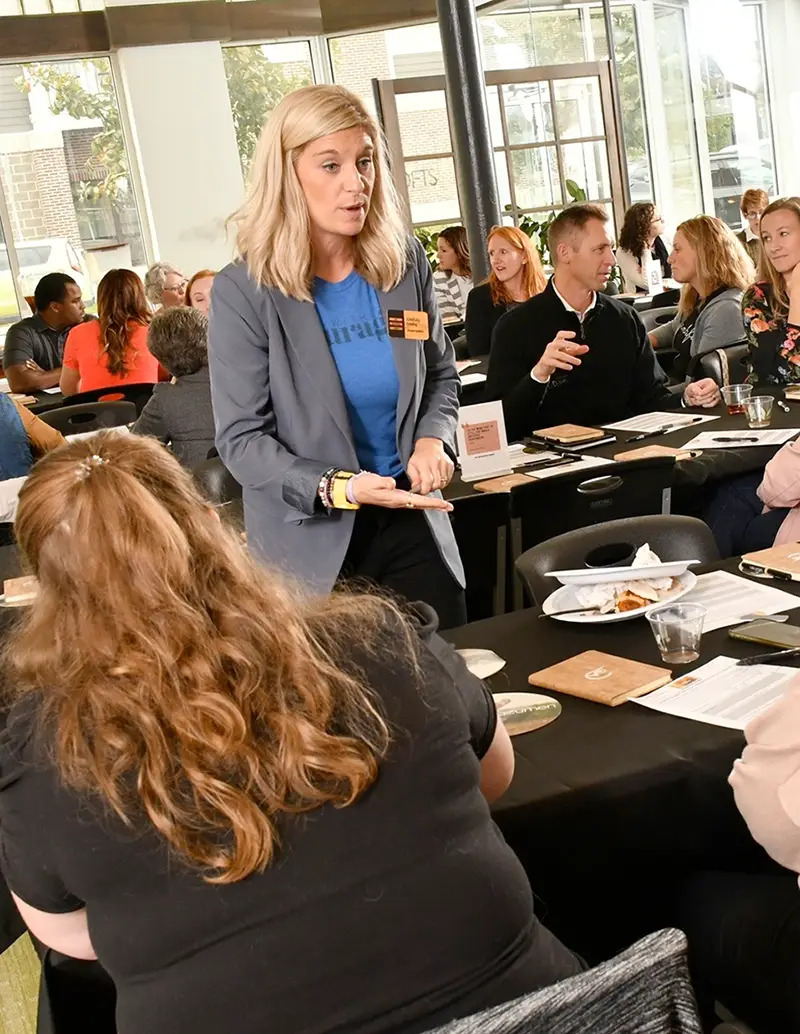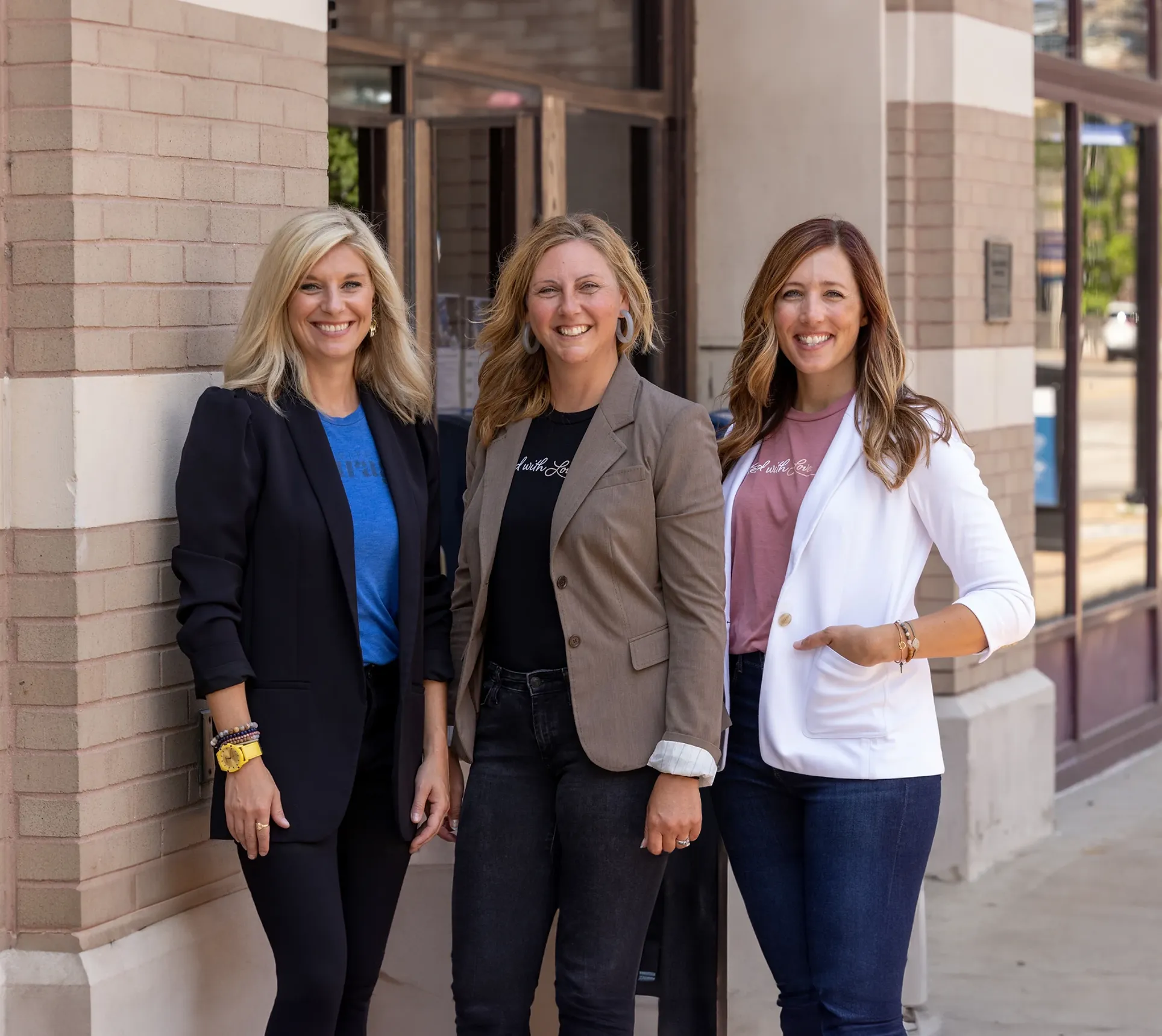Courage: Mental or moral strength to persevere, and withstand danger, fear, or difficulty. The quality of mind or spirit that enables a person to face difficulty, danger, pain, etc. in spite of fear.
We’ve been encouraging many leaders we work with who have good hearts and positive intent to stand up and speak out. Find their voice and share their ideas and opinions. The world needs people who have the greater good in mind and are willing to work toward unity instead of division. But it’s scary, we know. If you want to affect positive change but find yourself hesitant, then this post is for you.
When we’ve asked our community what living with courage looks like, these have been the answers we got back: pushing past discomfort, moving forward through fear, staying open when you’ve been hurt, riding the waves, getting back up, choosing to believe our truth instead of the lies told to us, taking ownership for how we’ve contributed to our situation, trusting our highest wisdom and listening to our heart.
Radical Courage vs. Typical Courage
We call this type of courage Radical Courage because it’s quite different than the Typical Courage we see modeled in our culture traditionally.
Typical Courage is often modeled by force and control. We put on our armor and exude power over people. We shut down ideas that we don’t agree with. We protect ourselves at all costs. We “got it alone” and never share our weakness.
This is a type of courage that I (Lindsay) am very familiar with. I have lived most of my life this way and still struggle some days against these tendencies. What I know for sure is that this model of courage leaves me fearful and lonely so I’m willing to do all that I can to continue to heal so that I can operate out of Radical Courage.
Radical Courage looks like acceptance and surrender. We are vulnerable and open. We allow others to have power, and opinions that don’t match ours. We honor and protect others as much as ourselves. We value community and connection. We depend on others…not afraid to speak our needs and ask for help. See why this type of courage is so difficult? Can you imagine how much better our world would be if we would all choose this way?
The Awareness –> Avoidance –> Anxiety Loop
So what keeps us from Radical Courage? Fear. When something challenging happens or we become aware that we are “wrong,” our natural tendency is to avoid (usually at all costs) and even shut down. This causes anxiety.
The Awareness –> Acceptance –> Action Loop
We have to flip that script and move from awareness to acceptance and then to action. Lack of awareness and denial keep us from becoming courageous. When we keep things in the dark then the guilt and shame pile up. I know it may seem scary to examine our thoughts and feelings and even scarier to bring them into the light (admitting them to ourselves, accepting what we don’t want, sharing with others), but the fact is that’s exactly what gives us courage and frees us from the guilt and shame. It also reminds us that we are not alone in our experience.
Practices for Building Courage
I’ve heard it said that “courage lives on the other side of trying” and I believe that to be true. You’ve got to get out there and just do it and know you’ll survive. We can’t think our way into courage, we have to act our way into it. Where you can really boost and solidify your confidence is by building key practices around the action. All of these practices are rooted in silence and solitude preparing you for action and allowing you to reflect and learn after the action.
Before action, solitude that prepares you for what you are going to do can be powerful. You can make time for meditation, visualization, and journaling. You can do things to calm your nerves like getting into nature, doing something fun and playful or engage in a creative activity. Leading up to your time, like right before I speak, I practice breath work (box breathing can be very powerful) to help calm the nerves, and I repeat affirmations to myself or even in the mirror.
Once you’ve engaged in the courageous action, things that can build and boost your confidence can be reflection, journaling and gratitude. Reflecting on what went well and letting that sink in, and then evaluating what could have gone better and leaning into that as a lesson, then letting it go. You can also reflect on how it went vs. how you thought it would go. Our natural focus is typically on the negative so force yourself to go to the positive first. This also expands our thinking. If simple reflection isn’t enough, journal about it.
A gratitude practice can be very grounding and courage building. When things go wrong (and they will sometimes) it is natural for us to focus on what we lost or what we don’t have and get stuck there. A gratitude practice helps us expand our perspective to include what we do have and the good things that coexist with the “bad.” What we choose to focus on will determine if we stay stuck or move forward. This practice can give us the courage to keep our heart and mind open and to keep our hope.
These cycles we get stuck in often happen without us knowing it. By cycles, I mean the times that we get stuck in the negative, fall into victimhood and give our power away by blaming or complaining, and lose perspective and hope that things can be different. There is a simple tool we share with clients that help us become more aware of our thoughts and reactions so we can prevent ourselves from getting stuck or get unstuck faster.
The SNAP Tool
SNAP stands for Stop, Notice, Ask, Pivot. Stop: Literally stop what you are doing. Switch off autopilot. Notice: Come into the present moment by becoming aware of what’s happening around and inside you. What are you seeing, hearing, smelling, touching? What are you thinking? How are you feeling? Ask: Here are some questions that we recommend for self-reflection and creating awareness, but you can feel free to sub in your own – What do I know for sure? What is in my control? What do I need to let go of? What do I need to accept? What do I need? Pivot: Choose the truth instead of the stories we make up, and choose to act from your best self vs. react in a way you might regret.
The stories we make up in our minds when something doesn’t go our way or happens to us unexpectedly can make the situation more painful and hard on us and those around us than the actual event itself. When someone doesn’t return your call, what story are you making up? When someone says something that hurts your feelings, what are you telling yourself? When you don’t get the promotion, where does your mind go?
Using this tool will help you move through the emotions so you can act and react as your best self. It also helps you let go of what you can’t control and move forward with renewed focus on what you can. This tool builds our courage and our resilience in big ways when employed in our daily life. Start by practicing outside of “incidents” to make it a habit. My business partner Brooke made it a habit by practicing while she was brushing her teeth. When and how can you try it?
Lastly, here are some questions to help you build your courage. We cannot have courage if we aren’t clear on our priorities and intentions. Think about it. When you have the courage to debate an issue or challenge someone on something, it’s because you really believe in it. Here are some questions to help you get clear on what you will stand up and speak out for:
- What matters most right now?
- What am I prioritizing?
- Where can I remove noise?
- What is my commitment to showing up for my life?
- How will I be held accountable?
For instance, if you say out loud to yourself and others that your family is what matters most right now, you will have the courage to say no to requests for your time and choices that will interfere with your time with your family. This year I have been prioritizing peace. This means I had a lot of old habits to break like overcommitting and overbooking myself. I had to define what peace would look and feel like for me. I was terrified at first, but had the courage to do it because I said peace is what matters most to me right now. Once I started living into and experiencing more peace, saying no and letting go became easier and easier.
I hope this encourages you to be intentional about building your courage so you can live your one precious life with intention and purpose.

Written by: Lindsay Leahy, Dream Builder at The Restoration Project


